Sphalerite or not? Part II
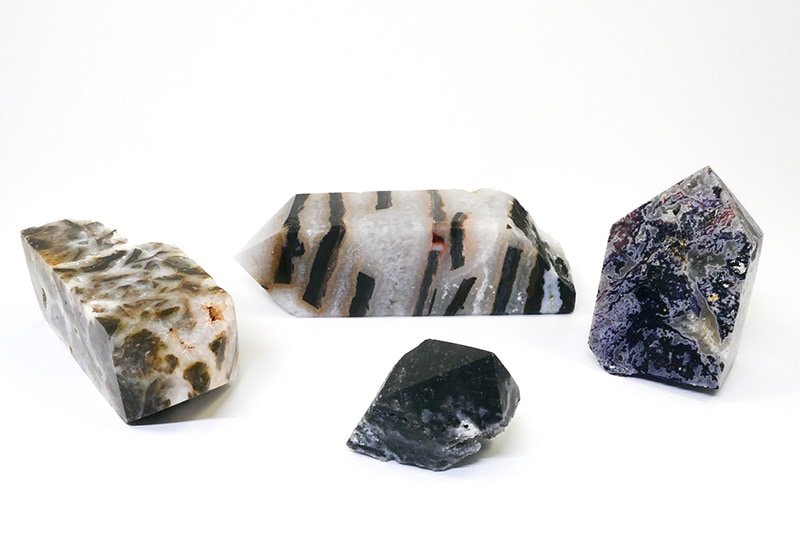
In my earlier article sphalerite or not? Part I you could read, which I told about some polished towers of “sphalerite” that I analyzed for one of my students who also sells stones. At least under that name the material was sold by the wholesaler. This material is still widely offered over the Internet even today, coming from Indonesia and China. The four towers look quite different and none of them show characteristics of the mineral sphalerite. I have already shared the first two analyses with you in Part I, these can also still be read as a blog on my website. Of course, this information is also included as an article in the Gem or Scam Library.

Left tower 1, bottom center tower 2, top center tower 3 and right tower 4
Sphalerite in quartz?
Tower number 3 is mainly white with brown-black non-transverse bands referred to as ‘sphalerite’. However, the brown-black bands have a Mohs hardness of about 6 – 7 and are thus harder than sphalerite (Mohs 3½ – 4). Possibly the sphalerite here is then in quartz, but this cannot be determined without additional research. In any case, the white in this tower is overtly quartz, between which a component fluoresces yellow-white with UVA. Chemical analysis (EDX) in a lab shows no zinc and/or sulfur (the constituents of sphalerite) are present in the brown-black constituent. However, quartz was detected with traces of manganese; the amount of manganese was too small to determine which mineral was involved (probably a manganese oxide). It did not become clear what causes the fluorescence.
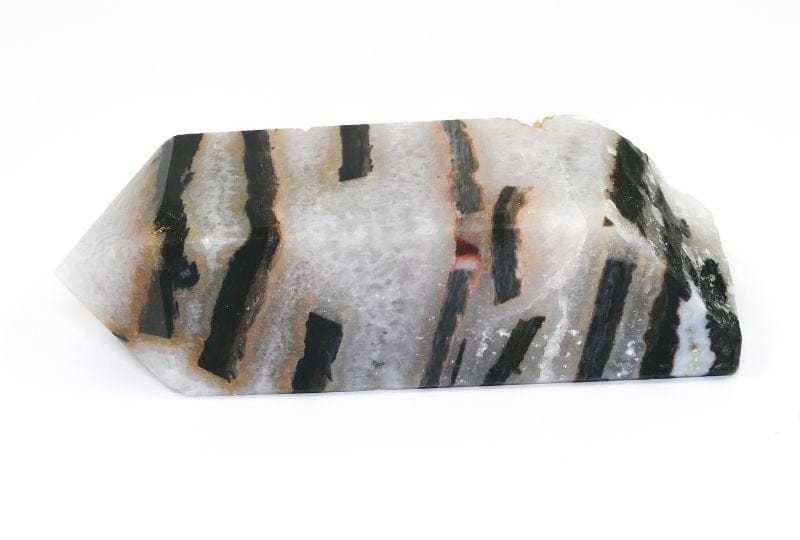
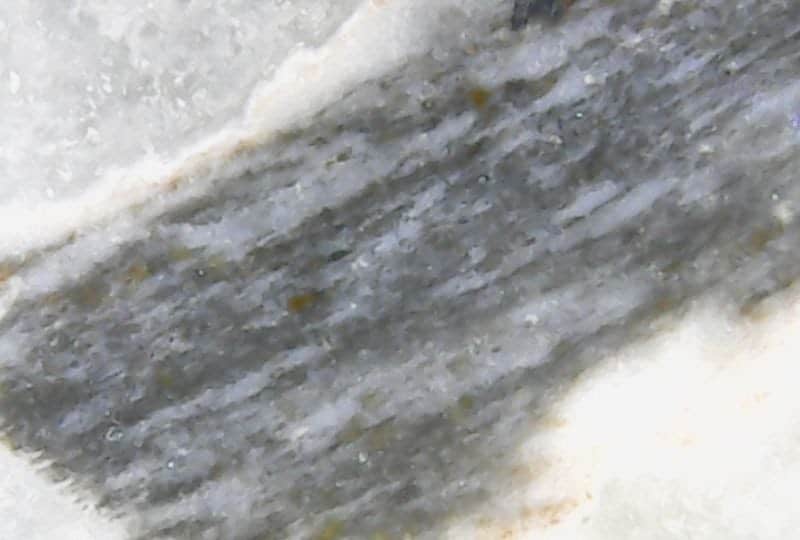
Tower 3 with “bands of sphalerite” appears to be quartz with inclusions of manganese
Purple sphalerite?
Tower 4 consists of a purple-black mottled rock and is therefore sold under the name “purple sphalerite” or “purple druzy sphalerite.” Examination under the microscope clearly reveals purple cubic crystals, probably fluorite. The purple constituents fluoresce red under UVA. The hardness also fits fluorite (Mohs <5), but would also fit sphalerite, although I know of no purple cubic sphalerite. In any case, quartz crystals are also clearly recognizable in the cavities. Here and there, small yellow-brown spots can be seen, could that be the sphalerite? Or still the black component in this tower? Without further analysis I unfortunately could not determine that.
In the laboratory, chemical analysis (EDX) supplemented by Raman spectroscopy identified three other minerals in addition to the quartz. The purple crystals are indeed fluorite, the yellow-brown spots are muscovite (mica) and the black mass appears to be graphite. Thus, no trace of sphalerite can be found in this tower either.
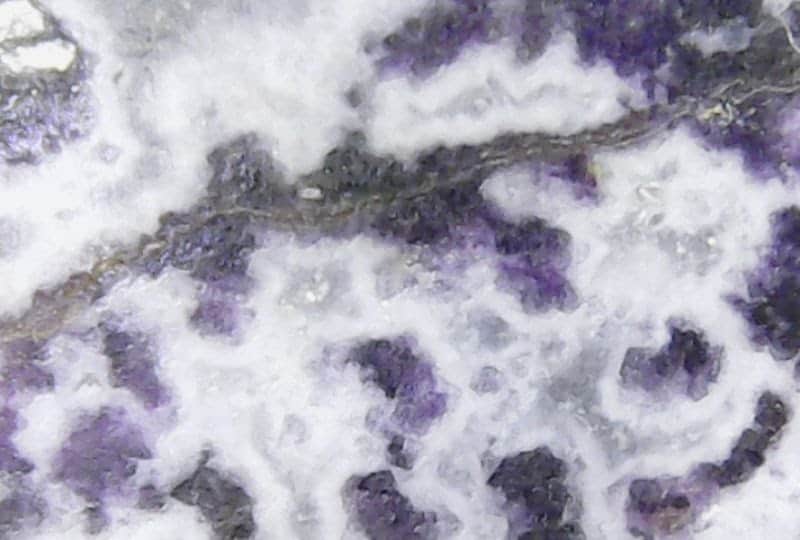
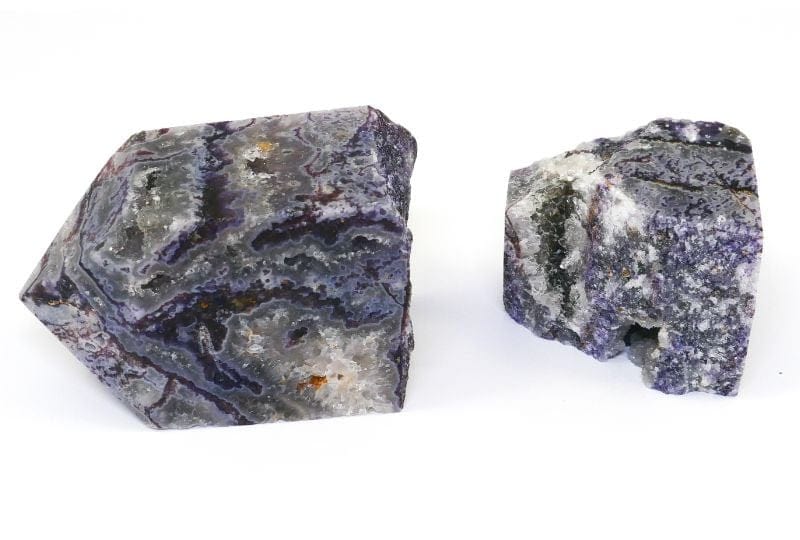
Tower 4 with “purple sphalerite” turns out purple fluorite, white quartz, muscovite and graphite
Conclusion
Sphalerite or not? Not so. Unfortunately, I have had to find that sphalerite has not been demonstrated in any of the towers despite being sold under that name. Unfortunately, much, and perhaps more and more, material is still being offered whose designation is geologically incorrect. When a wholesaler sells it that way the incorrect name quickly spreads like an oil slick among all sellers and enthusiasts. It is good that there are more and more critical sellers like my student, who do like to sell their stones with the correct information.
Read the Gem or Scam Library article here.
Would you also like to learn to better recognize or identify minerals based on their characteristics? Perhaps the online basic mineral identification course then something for you!
Of course, you can also come to Stack of Stones for mineral advice or analysis.





Responses